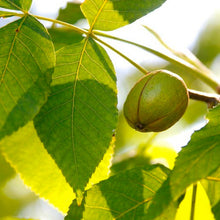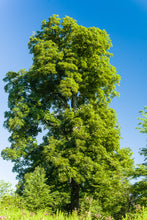|
Mature height x width: |
approx 60-80' x 40' |
|
Recommended initial spacing: |
5'-10' in rows 20' apart (to be thinned later) |
|
Recommended final spacing: |
20-30' (intermediate) 50' (final) |
| Hardy to: | approx -25°C |
|
Preferred soil: |
deep, moist, fertile, damp/wet soils. |
|
Good for: |
long storage, ornamental, slow-growing, riparian buffer, marsh edge |
|
Uses: |
dessert, main dish |
Shellbark hickories are not well-known as nut-bearing trees, but they produce a large nut almost as big as a walnut. Nuts are tasty but hard to crack, requiring much more than your regular nutcracker. Think hammer. With heavy-duty nut crackers they can be a great food source. They're a great choice for a wetter site because they grow in bottomlands. Additionally, they have incredible fall colours and valuable wood. Adapted as they are to deep forests, hickories grow slowly initially but eventually become massive trees (up to 80 feet tall!)
Genetics: Shellbark hickories are native to the eastern US and Southern Ontario, and these seedlings are from the Niagara region, in the northern part of their range. We recommend at least two trees to ensure the best crop.
Planting: Shellbark hickories want deep, moist (even wet), fertile, soil with pH 5 to 8. A great choice for the edge of marshes or riparian zones. They can tolerate shade, but expect slow growth and limited yields in the shade.
Why seedlings? Growing seedlings from productive, vigorous parents helps maintain diversity (each seed is a new variety) while drawing on some of the best genetics available. In other words, by planting seedlings, you are participating in the breeding and selection of new, regionally-adapted varieties!
Why bare root? "Bare root" means that the tree has been grown in the ground (rather than in a pot). In general, bare root trees tend to have larger root systems because their roots aren't constricted by the edges of the pot. Because we don't need to use pots or potting soil, we can sell them more cheaply than potted trees. Bareroot trees must be planted when they are still dormant (Nov - Mar in our region).



